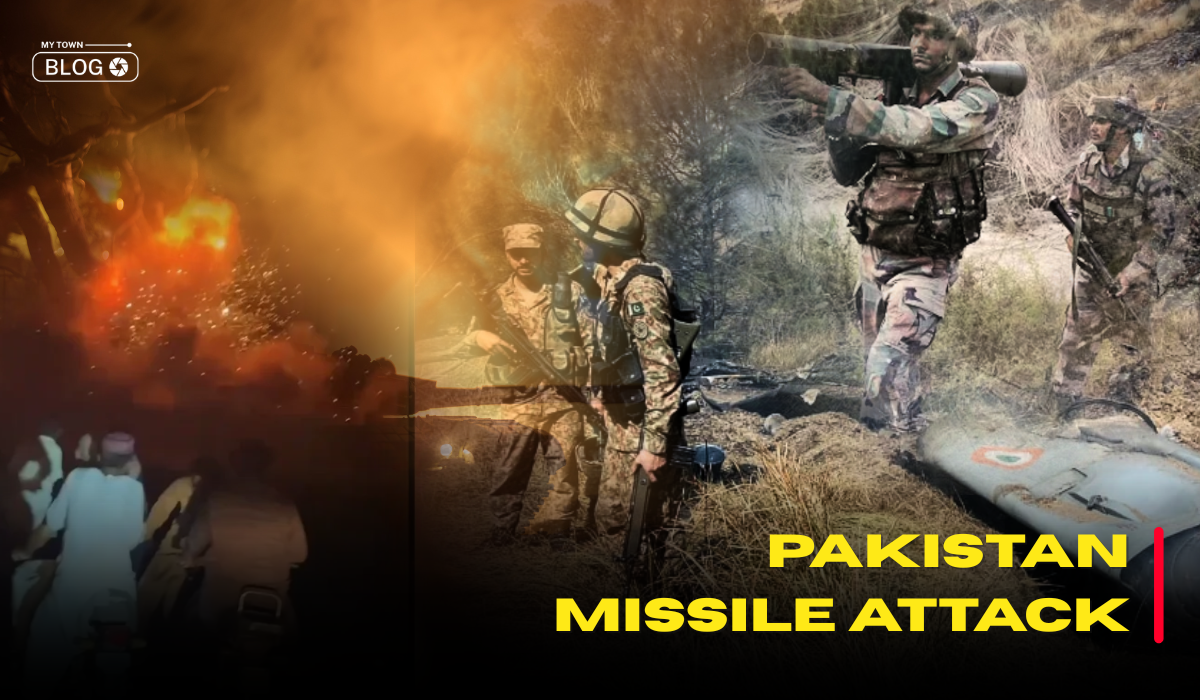Tensions between India and Pakistan have dramatically escalated following a series of coordinated military operations, cross-border strikes, and retaliatory drone and Pakistan missile attack incidents. The situation has raised international concern, triggered widespread blackouts in Indian border states, and forced civilians to evacuate. Here’s a complete breakdown of the events that have unfolded in recent days, what triggered the unrest, and the current status.
Pahalgam Terror Attack: The Spark Behind the Conflict
The current military tension traces back to the brutal terror attack in Pahalgam, Jammu & Kashmir, on April 22, which killed 26 tourists, including one Nepali national. The assault, described by Indian authorities as “barbaric,” marked one of the worst terrorist incidents in the region in recent years. In response, India vowed to strike back decisively.
India Launches Operation Sindoor: A Bold Retaliation
On May 8, the Indian government launched “Operation Sindoor”, a significant military operation targeting alleged terror training camps in Pakistan and Pakistan-occupied Kashmir (PoK). According to India’s Defence Ministry, nine terror bases were destroyed using precision-guided airstrikes and drone attacks, eliminating critical assets of terror outfits suspected to be behind the Pahalgam massacre.
India emphasized that the strikes were a direct retaliation against state-sponsored terrorism and conveyed a clear message that any threat to its sovereignty would be met with strong countermeasures.
Pakistan’s Denial and Retaliation
Pakistan quickly denied any involvement in the Pahalgam attack and accused India of violating international norms by launching cross-border strikes. In what appears to be a retaliatory move, a Pakistan missile attack was launched, with eight missiles and multiple drones reportedly fired into Indian territory. The strikes targeted military assets in Jammu, Udhampur, Pathankot, and Punjab.
Pakistan’s Defence Minister Khawaja Asif dismissed India’s allegations as “baseless,” claiming no responsibility for the drone warfare or the Pakistan missile attack, despite Indian intelligence tracking the launch origin.
Meanwhile, Indian officials claimed their air defence systems successfully intercepted the incoming missiles and even neutralized an enemy air defedefensence system near Lahore.
Blackouts in Border States: A Precaution Against Aerial Attacks
In light of potential retaliatory drone strikes and another possible Pakistan missile attack, India placed multiple states on high alert, enforcing blackouts across cities and towns near the border to make targeting more difficult during night hours.
States affected include:
- Punjab: Amritsar, Jalandhar, Pathankot, Ferozepur, Bathinda
- Gujarat: Kutch and Banaskantha
- Rajasthan: Sriganganagar and Barmer
- Jammu & Kashmir: Jammu, Rajouri, and Poonch
Advisories urged citizens to switch off lights, reduce mobile usage, and avoid movement during blackout hours.
India’s Air Defence System Intercepts Multiple Threats
India’s multi-layered air defense was swiftly activated to counter the Pakistan missile attack and drone threats. According to defence sources, the following systems were deployed:
- S-400 Triumf Systems
- Barak-8 Medium Range SAMs
- Akash Missile Systems
- Integrated Counter-UAS Shield
These systems neutralized incoming missiles, preventing civilian casualties and infrastructure damage.
Civilians Displaced: Shelters Activated in Jammu & Kashmir
Amid fears of further Pakistan missile attacks and drone strikes, over 2,000 civilians near the Line of Control (LoC) were moved to temporary shelters in Jammu, Samba, and Kathua. The Indian government provided essentials and deployed psychological support teams to help families manage fear and trauma.
International Reactions and Concerns
The heightened conflict and the threat of continued Pakistan missile attacks have drawn global attention. The UN, U.S., and EU have called for restraint. The U.S. embassy in Islamabad issued a shelter-in-place order for its Lahore personnel following reports of Indian drone strikes.
India’s Foreign Secretary Vikram Misri stated:
“India’s operations are precision-targeted and defensive. We do not seek war, but terror will not go unpunished.”
Conflicting Casualty Reports Add to the Confusion
Both India and Pakistan have shared differing figures on fatalities, intensifying confusion. India reported 16 deaths, including civilians, from Pakistan missile attacks, while Pakistan claimed 31 deaths from Indian retaliatory strikes. Independent verification remains pending.
Current Status: A Tense Standstill with High Alert Ongoing
Indian and Pakistani forces remain on alert along the border. The Indian Air Force continues aerial surveillance, and Pakistan has reinforced key sectors, anticipating further escalation or another Pakistan missile attack.
Conclusion
This standoff, sparked by terror and escalated through Pakistan missile attacks and Indian retaliation, stands as one of the most critical flashpoints in recent South Asian history. Strategic diplomacy and international mediation are urgently needed to prevent a full-blown war between two nuclear nations.
Resources:








